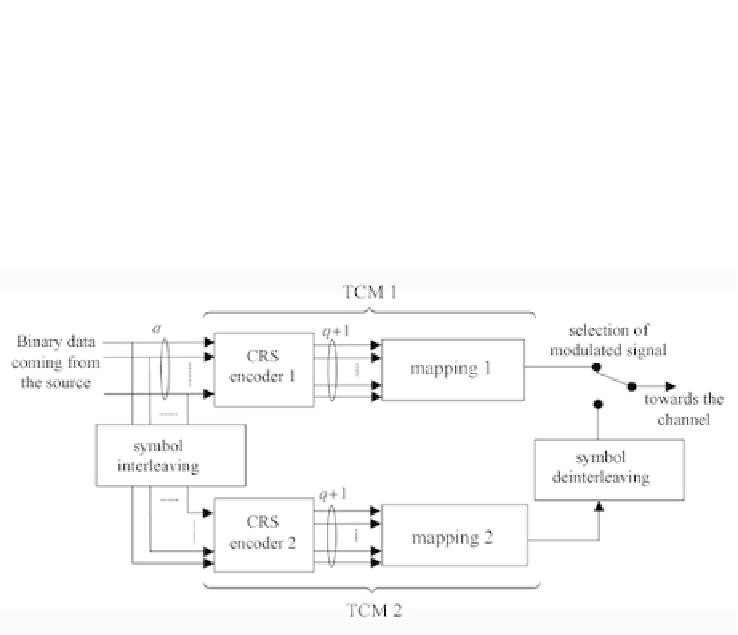Cryptography Reference
In-Depth Information
distances, then assigning to each branch of the trellis a signal belonging to the
constellation, respecting a set of rules such as those described in [10.7].
The TTCM scheme presented by Robertson and Wörz is shown in Fig-
ure 10.1. Each TCM encoder is made up of a recursive systematic convolutional
encoder, or RSC encoder, with rate
q/
(
q
+1)
, and a modulation without memory
of order
Q
=2
q
+1
. The binary symbols coming from the source are grouped
into symbols of
q
bits. These symbols are encoded by the first TCM in the order
in which are produced by the source and by the second TCM after interleaving.
Figure 10.1 - Diagram of the principle of turbo trellis coded modulation (TTCM),
according to Robertson and Wörz [10.5, 10.6]. Spectral eciency
η
=
q
bit/s/Hz.
Each
q
-tuple coming from the source being encoded two times, a selection
operator alternatively transmits the output of one of the two TCM encoders,
in order to avoid the double transmission of information, which would lead to
a spectral eciency of the system of
q/
2
bit/s/Hz. This in fact amounts to
puncturing half of the redundancy sequence for each convolutional code.
At reception, the TTCM decoder is similar to a turbo decoder, except that
the former directly processes the (
q
+1
)-ary symbols coming from the demod-
ulator. Thus, the calculation of the transition probabilities at each step of
the MAP algorithm (see Section 7.4) uses the Euclidean distance between the
received symbol and the symbol carried by each branch of the trellis. If the
decoding algorithm operates in the logarithmic domain (Log-MAP, Max-Log-
MAP), it is the branch metrics that are taken equal to the Euclidean distances.
Computing an estimate of the bits carried by each demodulated symbol, before
decoding, would indeed be a sub-optimal implementation of the receiver.
Similarly, for ecient implementation of turbo decoding, the extrinsic infor-
mation exchanged by the elementary decoders must directly concern the
q
-tuples
of information transmitted and not the binary elements that they are made up



